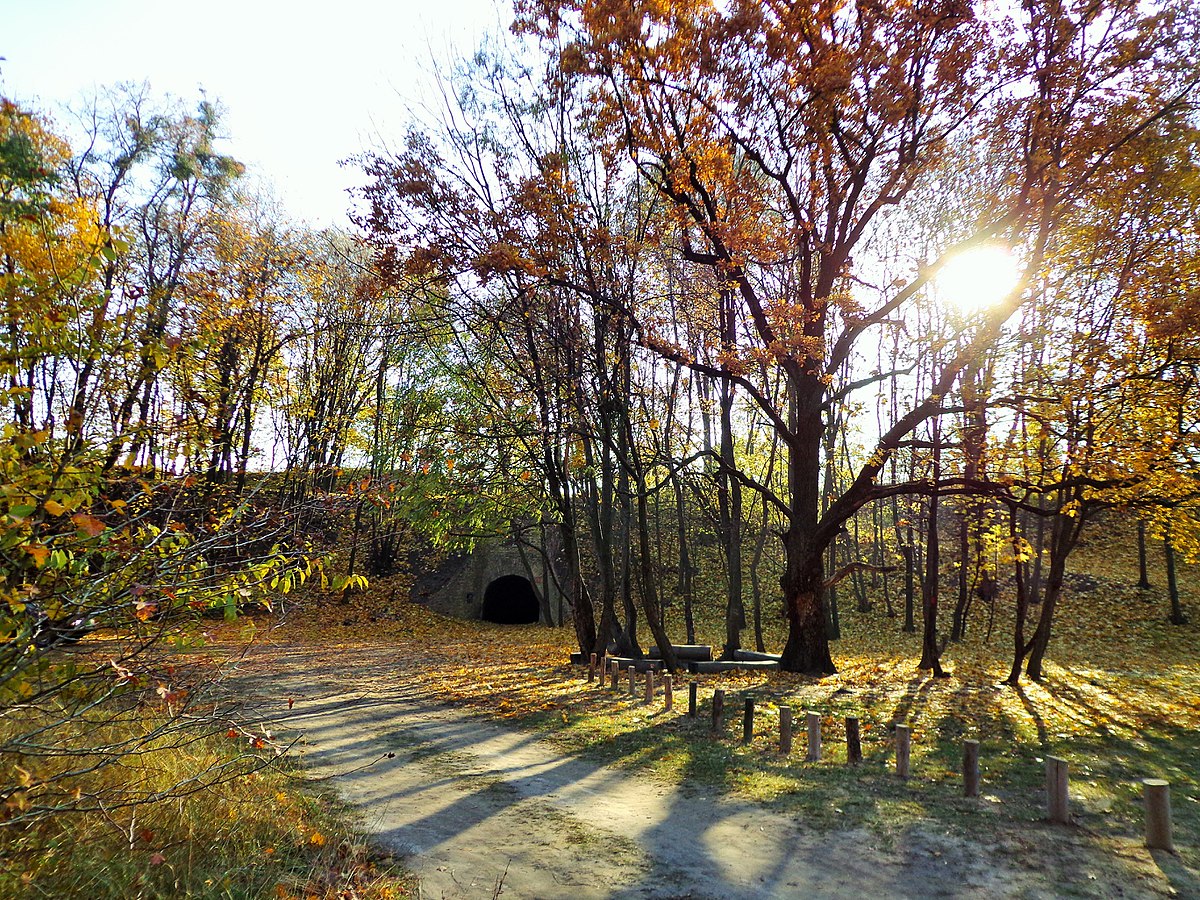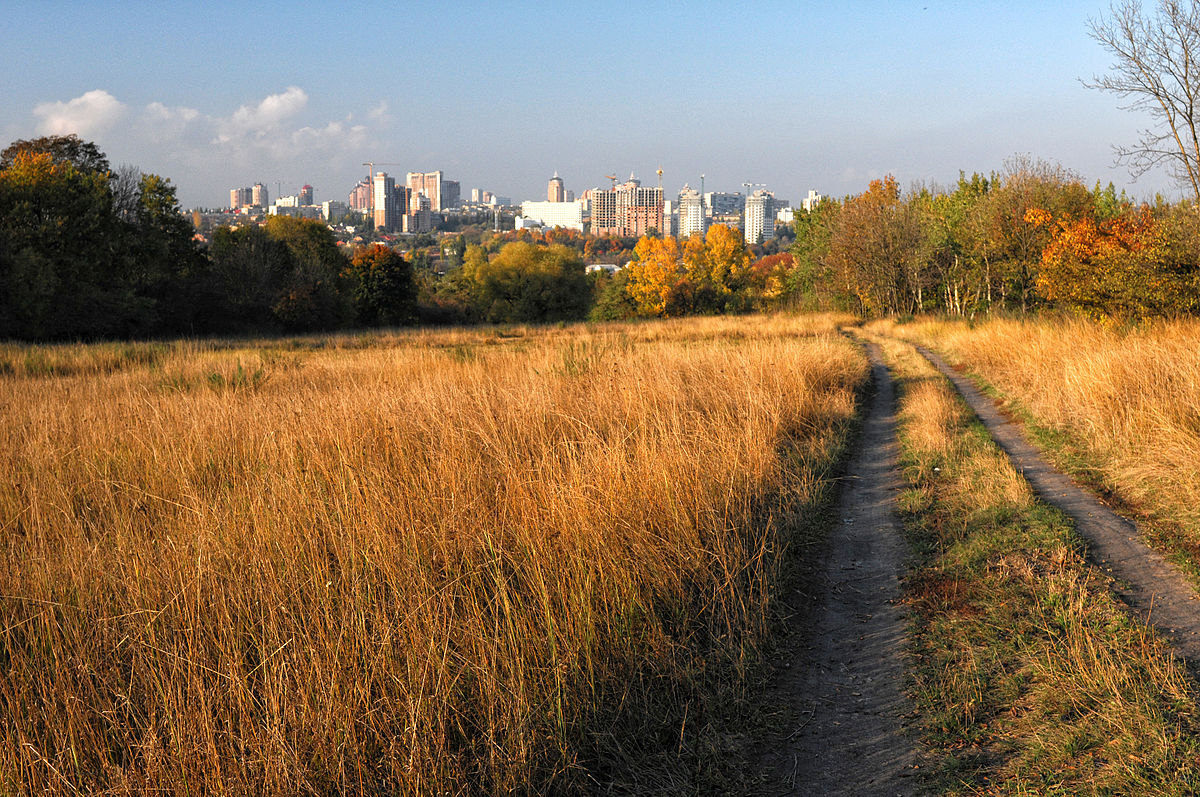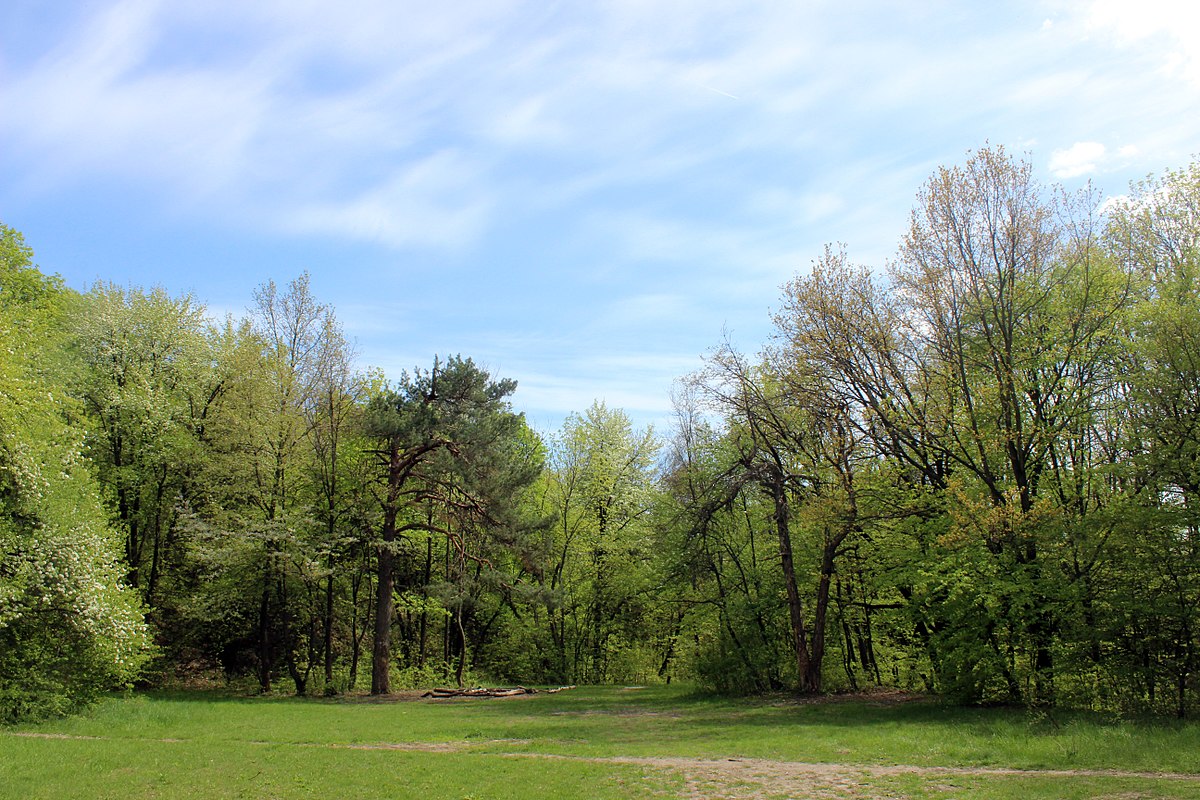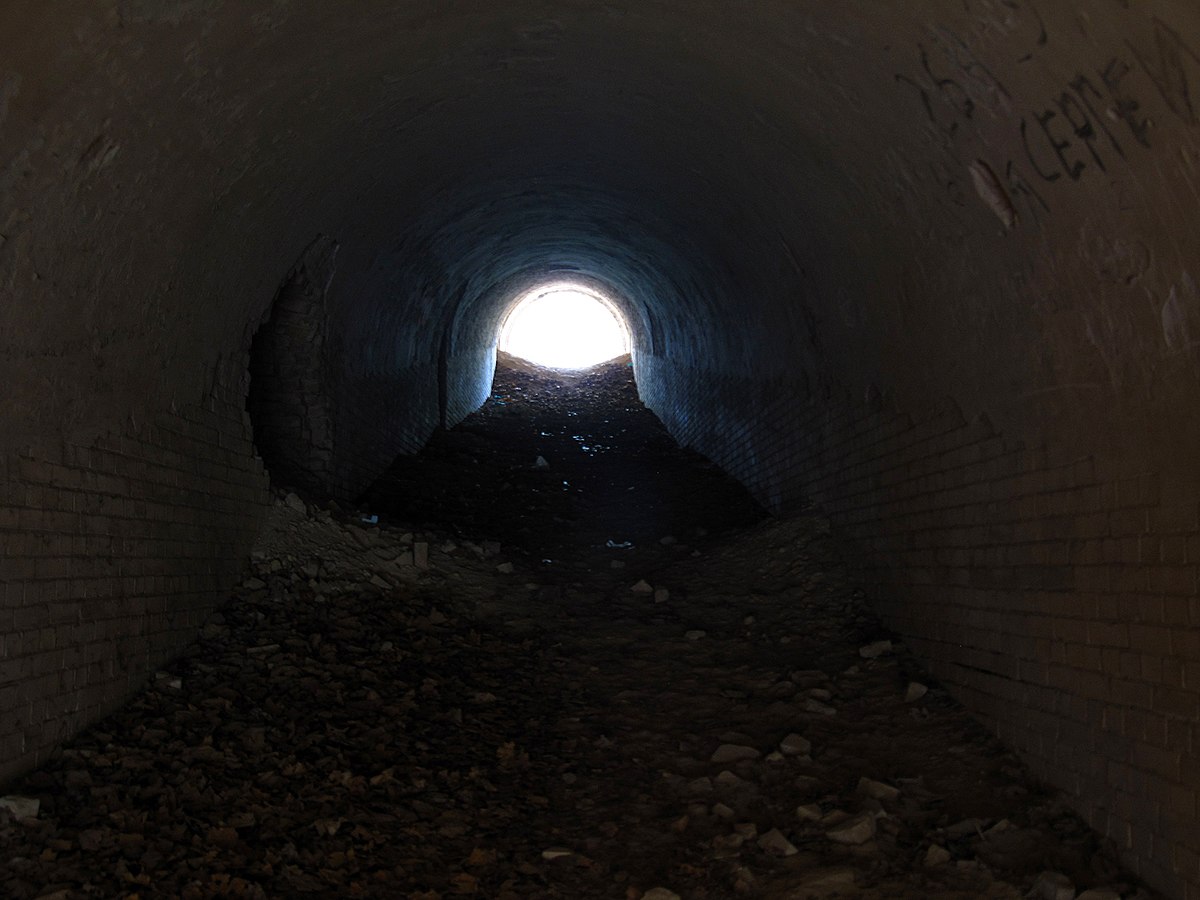Bald Mountain – historical area
The name of the mountain is mainly due to the small presence of woody vegetation (however, nowadays the mountain is covered with forest, and its top is lushly overgrown with Red Book herbs). In the second half of the 19th century, the Lysogorsk fortifications of the New Pechersk Fortress were built here, and since 1923 the area became part of the city as a forest park. Currently, “Tolkienists”, Satanists, pagans, informals and representatives of other youth subcultures, as well as tourists and cyclists, gather on Bald Mountain.
The name Bald Mountain in Kyiv was also given to: Devil’s Beremishche (the ravine where funicular railway passes); sandy area between Nikolskaya Slobodka and Voskresenka on the Left Bank of Kyiv; as well as Mount Ploskaya (above the Yurkovitsa tract). The modern Zapadinskaya street also bore the name Lysogorskaya. On February 17, 1994, the Bald Mountain regional landscape park was created with a total area of 137 hectares.
During the times of Kievan Rus, pagan rituals were held on Bald Mountain. The ancient Magi made the first underground passages in Bald Mountain. Over time, part of the mountain passed to the Pechersky Monastery – here the monks located their apiaries. But in the second half of the 19th century, the city government bought these lands for military use. Despite public opinion opposed to the construction of a fortress (which meant the destruction of houses near Bald Mountain and deforestation), the military managed to obtain permission to build the fort. In 1872, under the leadership of general and engineer Eduard Totleben, construction of the Lysogorsk fort began. After completion of the work, the fort was a complex system of bastions, ravelins, tenals, lunettes, and retranchement.
The earthen ramparts, up to 12 meters high, were cut through by turnas – long, up to 40 meters, tunnels lined with brick and closed on both sides with iron gratings. The barracks could accommodate up to 2000-2500 soldiers. Barracks for engineering units were built next to the fortress (the name of the area Sapernaya Slobodka and Saperno-Slobodskaya Street remained as a reminder of them). The plan of the fortress was kept secret and the punishment for its disclosure was exile to Siberia, and in wartime – execution. Underground water reservoirs were also built – if the enemy occupied the fortification, the fortress had to be flooded along with the garrison. Over time, the New Pechersk Fortress (which included the Lysogorsk Fort) received the status of a 3rd class fortress. Since 1897, the fort has been converted into military warehouses and a garrison prison. In 1906, gallows were installed in the northern part of Bald Mountain to carry out sentences on state criminals. Those sentenced to death were delivered in the morning from Oblique Caponier; after the execution of the sentence, the executioner buried the bodies not far from the gallows (now many of these graves have been dug up by unknown persons). In the 1930s, Bald Mountain was turned into an underground military plant. During the German occupation, a base of Tiger tanks was located in the dungeons (their remains are now found even on the surface). During the retreat, German troops blew up the entrances to the dungeons.
Bald Mountain – landscape park
The park occupies the tract of the same name and the historical area between Saperno-Slobodskaya Street, Stolichnoye Highway, the Lybid River, the historical areas of Saperno-Slobodka and Bagrynova Mountain. In the northeast, the park is adjacent to the natural monument Natural Bed of the Lybid River. The historical and architectural monument Lysogorsky Fort is located in the tract – part of the Kyiv fortress.
The landscape of the park is represented by forests of natural and anthropogenic origin (80%), meadows and meadow steppes (20%). The vegetation was formed in the absence of recreation, but with intensive logging.
Forest vegetation is represented by oak, hornbeam-oak and oak forests. The height of the tree stand is 20-25 meters. The Opolchensky and Totlebena oaks are located here. The undergrowth is formed by such species as hazel, warty euonymus and European; herbage – common gooseberry, green grass, hairy sedge, European hoofweed, lanceolate chickweed. Artificial plantings are represented by tree species: Norway maple, tall ash, smooth elm, cordifolia linden, warty birch, common oak, hornbeam, common pear and others, which form mixed plantings of several species. Wetland vegetation is widespread in the basin with the lake, which is in the east of the tract, with dominant reeds with the addition of lake schenoplectus (reed) and angustifolia cattail.
The isolation of the tract from other natural complexes causes the absence of rare species of animals, except for the woodpecker.





